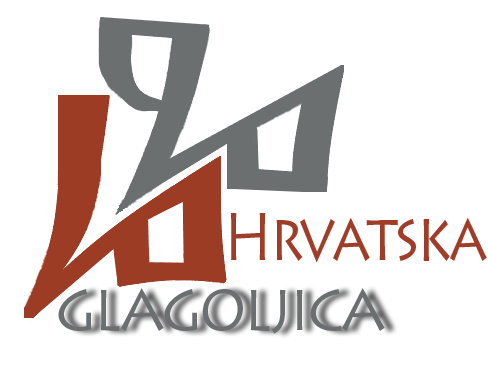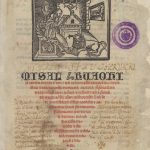The Glagolitic printing house in Rijeka started operating in the first half of the 16th century, on the initiative of the Bishop of Modruš Šimun Kožičić Benja, the descendant of one of the oldest, most respectable and affluent noble families in Zadar. After the Ottomans took over Jajce and invaded the Krbava and Lika regions, they pillaged and burned down a part of the Diocese of Modruš. They eventually managed to take control of Modruš itself and set fire to the bishop’s palace. Kožičić was thus forced to leave Modruš and retreated to Novi Vinodolski, where he did not feel safe, owing to which reason he went to Rijeka in 1529, and there founded a printing house in 1530. He travelled to Venice to buy printing equipment and there managed to obtain one incomplete series of decorated half-Gothic xylographic initials with the portraits of saints. He also had his typographic mark done, which represented the coat of arms of the Kožičić family, along with five plain black-and-white Glagolitic xylographic initials, two different sets of sophisticated Glagolitic types, smaller half-Gothic initials and seven Glagolitic initials of the same size. The half-Gothic initials with the portraits of saints were made by artist Matteo da Treviso. In less than six months, from 15 December 1530 to 27 May 1531, Kožičić published six Glagolitic books. The first was a psalter (Psaltir), basically a primer for learning and reading prayers. Then followed a book of prayers to the Blessed Virgin Mary (Oficij Rimski. Oficij blaženije Devi Marije) and Kožičić’s most attractive work, The Croatian Missal (Misal hruacki). The last three works were a small book of rites (Knjižice krsta), a chronicle of Popes and Roman emperors (Knjižice od žitija rimskih arhijereov i cesarov) and a handbook for the mentoring of new members of monastic orders (Od bitija redovničkoga knjižice).
There are almost no records about Kožičić’s printing house, so the works it published are essentially the only evidence of its activity. Their colophons and closing inscriptions contain valuable data on editors, place and dates of publication, and printers. We thus learn that Bishop Kožičić was the books’ editor, that the printing shop was located in his house, and that the works were printed at the Bishop’s expense. Also, it very likely that all six books were printed by Domenico and Bartolomeo Zanetti from Brescia.
References:
Nazor, A. (Ed.). (2008). Knjiga o hrvatskoj glagoljici : ja slovo znajući govorim (pp. 106, 113). Zagreb: Erasmus naklada.
Nazor, A. (2011). Šimun Kožičić Benja i njegova glagoljska tiskara u Rijeci. Vijenac, 449, pp. 16-17.



